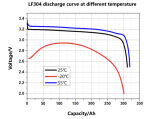gregcope
Well-Known Member
The rebuild was a good chance to try out my Yaorea YR1035+ resistance tester to check the internal resistance of the cells. Measured through the busbars the resistances varied between 0.75 milli-ohms and 0.22 milli-ohms, but with the bus bars removed and measured direct on the terminals the resistances varied only between 0.17 and 0.16. That seems impressive to me to get such a well-matched set of cells as a grey import. The other lesson is that the busbar to terminal connection is clearly vulnerable to mismatch and, for anyone building a pack, that alone might justify the purchase of a resistance tester (which is ridiculously easy to use) to check that all connections are good. Cost of the unit from Ali Express is currently £42. It looks very well made. Real Four Wire Lithium Battery Internal Resistance Tester YR1035+ Nickel Hydrogen Lead Button Polymer Alkalinity|Battery Testers| - AliExpress
Off-Grid Garage has a video on it.
Mine all tested between 0.21 and 0.23 milli-ohms as measured on the terminals.






